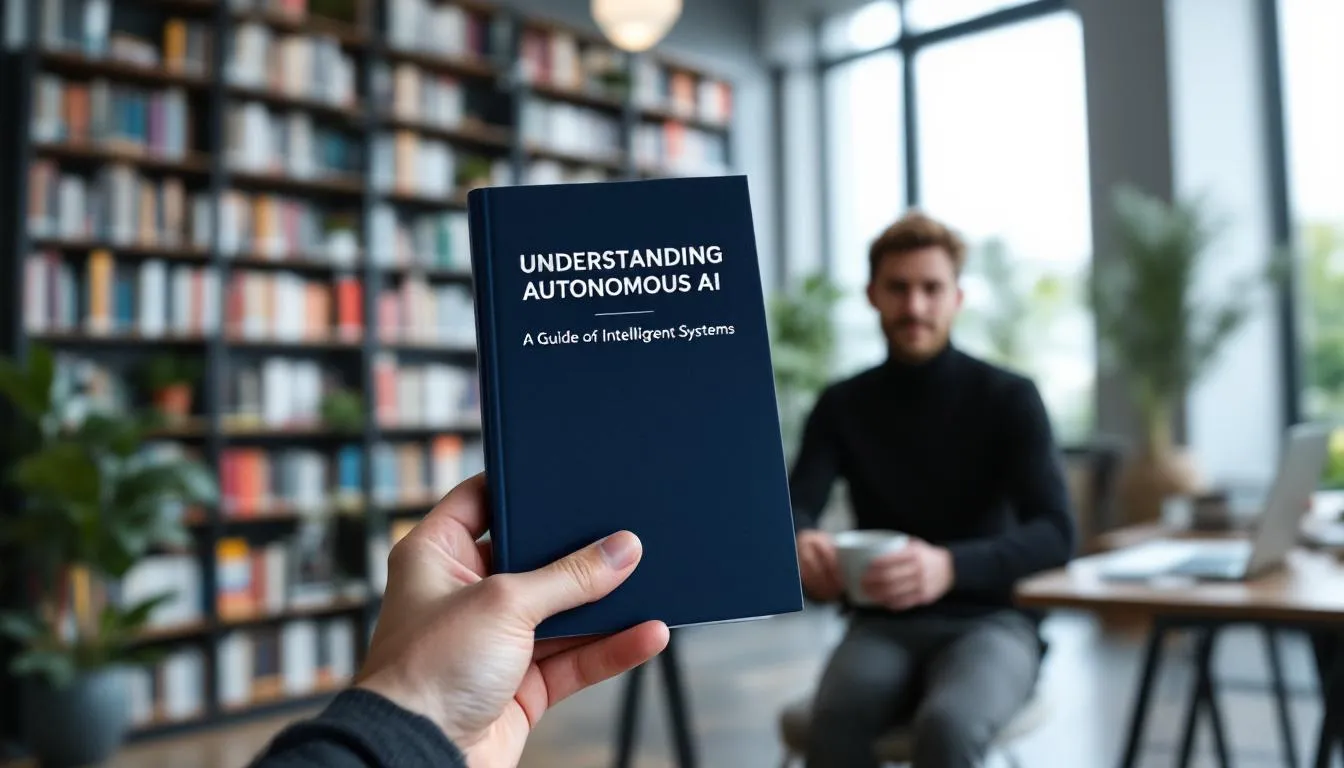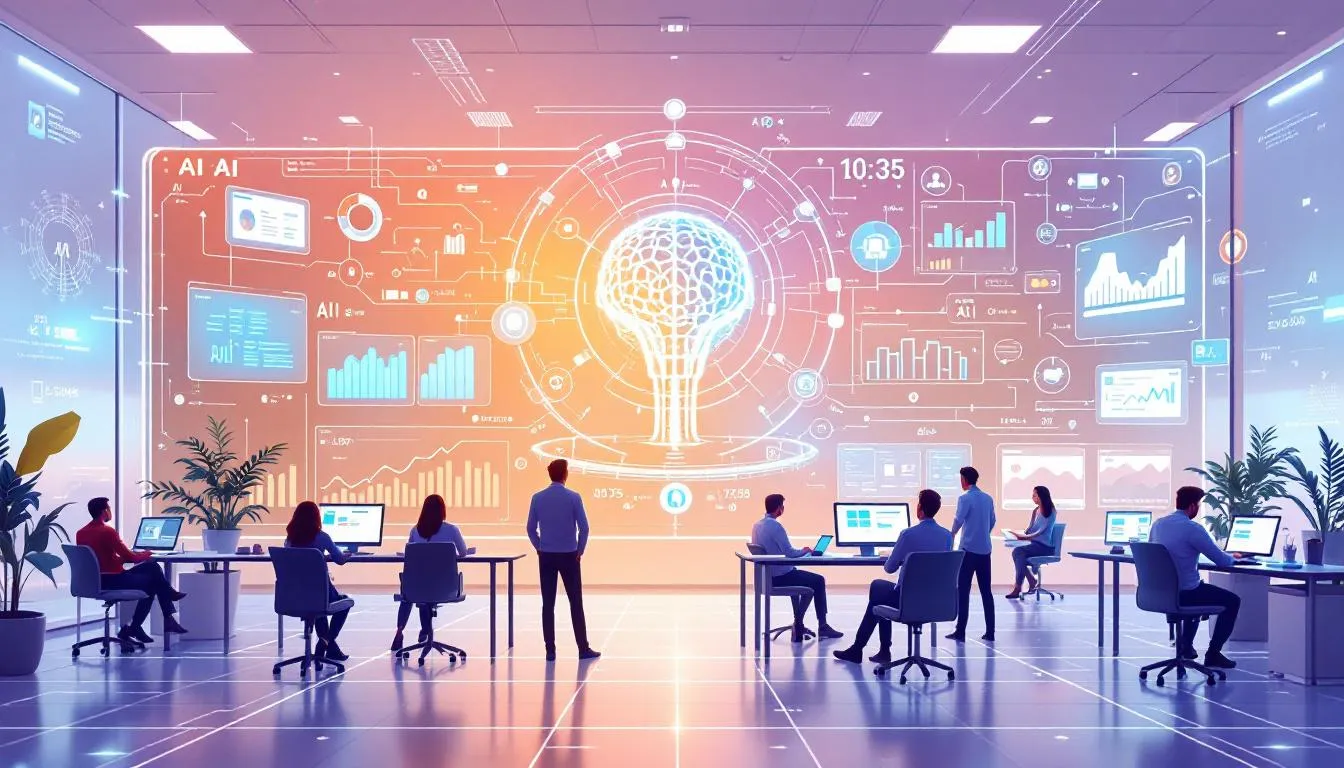
Artificial intelligence is rapidly evolving, with autonomous AI and agentic AI systems emerging as powerful tools capable of operating with minimal human intervention. This in-depth guide explores the fundamentals, architecture, decision-making models, and future directions of these systems, while emphasizing their role in organizational processes, decision support systems (DSS), and data-driven decision making.
Introduction to Artificial Intelligence
Definition and Scope
Artificial Intelligence (AI) refers to the creation of computer systems capable of performing tasks traditionally requiring human intelligence—such as problem solving, decision making, learning, and understanding natural language.
-
Narrow AI (Weak AI): Focused on specific tasks (e.g., chatbots, recommendation systems).
-
General AI (Strong AI): Hypothetical systems capable of performing any intellectual task a human can.
Autonomous AI systems—including agentic AI—take this further by making independent decisions and acting without constant human oversight, drawing from historical data, real-time data, and external data to navigate dynamic environments.
Background and Motivation
Technological Innovations Driving Autonomous AI
The rise of autonomous AI is fueled by advancements in:
-
Machine Learning (ML) and Reinforcement Learning (RL) for adaptive decision making.
-
Natural Language Processing (NLP) for understanding human intent.
-
Computer Vision for interpreting visual inputs.
-
Internet of Things (IoT) for real-time data collection.
-
Cloud Computing for scalable data management and processing.
Example: OpenAI’s multi-agent frameworks and Google DeepMind’s AlphaZero showcase the ability of AI to act independently in complex tasks such as strategic planning and real-time decision making.
Key Characteristics of Autonomous Systems
Autonomous Decision Making
Autonomous AI relies on:
-
Data Analysis & AI Models: Evaluate market trends, resource constraints, and organizational processes.
-
Decision Context Awareness: Tailoring actions to environmental conditions.
-
Safety & Efficiency Checks: Ensuring minimal errors and ethical compliance.
These systems can operate independently, coordinate multiple autonomous agents, and optimize workflows without constant human oversight.
Decision Support Systems (DSS)
Decision Support Systems integrate AI agents with information systems to facilitate decision making.
Types of DSS
|
DSS Type |
Description |
Example |
|---|---|---|
|
Data-Driven DSS |
Uses data mining and analytics to produce reports & insights. |
Retail analytics predicting seasonal demand. |
|
Document-Driven DSS |
Organizes and retrieves unstructured data. |
Legal document retrieval systems. |
|
Knowledge-Driven DSS |
Applies expert rules to guide decision makers. |
Medical diagnosis support tools. |
|
Model-Driven DSS |
Uses mathematical models & simulations. |
Financial risk assessment models. |
|
Communication-Driven DSS |
Facilitates collaboration among decision makers. |
Real-time virtual boardroom platforms. |
Data-Driven Decision Making
Data-driven DSS enables organizations to analyze vast amounts of data and generate relevant information for decision makers.
-
Historical Data: To identify trends.
-
Real-Time Data: For adaptive responses.
-
External Data: For market and competitor analysis.
Case Study: An ERP system integrated with an agentic AI tool can analyze supplier performance and recommend the best procurement strategy in real time.
Communication-Driven Decision Making

When more than one person is involved in complex workflows, communication-driven DSS becomes essential. These systems gather relevant information, share user criteria, and facilitate decision making across departments.
Example: Slack integrations with AI agents that summarize discussions, identify action points, and schedule follow-ups in multi-agent systems.
Agentic AI Systems
Agentic AI combines autonomous agents with AI models capable of:
-
Understanding human intent.
-
Coordinating multi-agent systems.
-
Learning from historical and real-time data.
-
Managing dynamic processes.
Applications:
-
Supply Chain Optimization: Autonomous agents manage logistics based on demand forecasts.
-
Customer Support: AI chat agents handle repetitive tasks and escalate only complex cases to human agents.
-
Strategic Planning: AI assists in resource allocation under constraints.
Decision Making Process in Agentic AI
Understanding Decision Context
The decision context includes:
-
Business Context: Industry regulations, competitive pressures.
-
Market Trends: Seasonal demand changes.
-
Organizational Processes: Internal workflows and approval hierarchies.
Example: An AI-driven investment system might factor in market volatility and user-defined risk tolerance before executing trades.
Challenges and Limitations
-
Data Quality Issues — Incomplete or biased data can lead to flawed outcomes.
-
Lack of Human Oversight — Risk of unintended consequences in dynamic environments.
-
Ethical Concerns — Autonomous decisions affecting human lives require transparent reasoning.
-
Integration with Legacy Systems — Older enterprise resource planning tools may not support AI-native functions.
Future Directions
-
Enhanced Adaptability: More resilient agentic systems using meta-learning.
-
Human-in-the-Loop Models: Combining AI speed with human judgment for critical considerations.
-
Generative AI Integration: For report generation, scenario simulation, and knowledge discovery.
-
Scalable Multi-Agent Architectures: Coordinating multiple autonomous agents in large enterprises.
Conclusion

Autonomous AI and agentic AI systems are transforming decision-making processes across industries. From data-driven DSS to communication-driven collaboration tools, these systems collect data, analyze vast datasets, and act independently to optimize organizational processes.
With real-time adaptability, reinforcement learning, and multi-agent coordination, advanced AI systems are moving toward a future where complex tasks are handled seamlessly, allowing humans to focus on strategic and creative problem-solving.
Further Reading:
